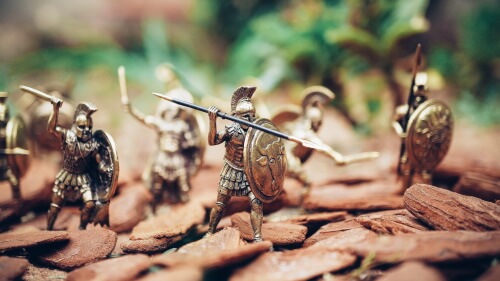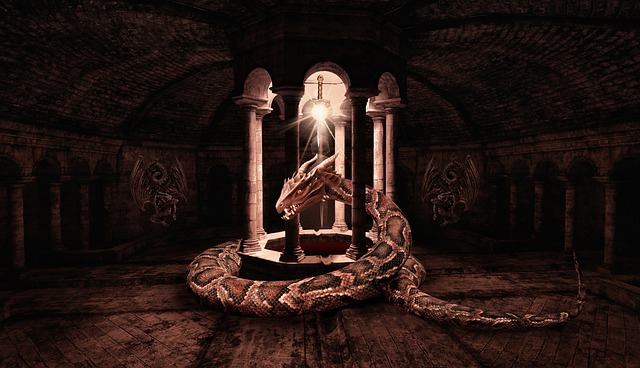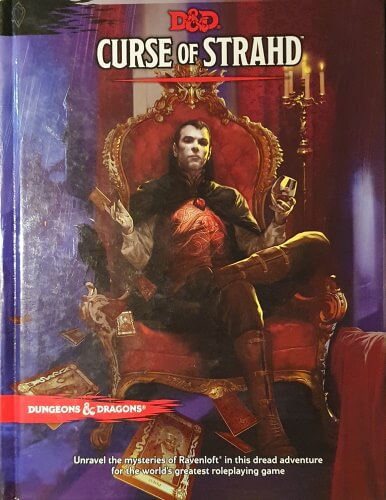In this post, we will deal with the topic of Dungeons and Dragons. What is DnD? Who is a Dungeon Master? What is a party and where do they adventure? What do you need the dice for and what kind of map do you use? Do you even have to use all these things and where do you start?
A short history of DnD
Dungeons & Dragons, commonly abbreviated as D&D or DnD, is a fantasy tabletop role-playing game (RPG). It was originally designed by Gary Gygax and Dave Arneson. First published in 1974 by Tactical Studies Rules, Inc. (TSR), and since 1997 it has been published by Wizards of the Coast (WotC). In 1977, Dungeons & Dragons split into two branches: Basic Dungeons & Dragons, which uses relatively few rules, and Advanced Dungeons & Dragons, which has many more. In 1989, they published the Advanced Dungeons & Dragons 2nd Edition. Dungeons & Dragons 3rd Edition came out in 2000, and the revised version 3.5 in 2003. The 3rd edition rules formed the basis of the D20 System under the Open Game License (OGL) for use by other publishers. D&D 4th Edition was released in June 2008. The original game has spawned many sequels and expansions, with the latest being the 5th Edition released in 2014.

The game is a variation of miniature wargames, a form of wargaming in which they use miniature physical models on a model battlefield to represent military units. The Chainmail game from 1971, developed by Gary Gygax and Jeff Perren, served as the initial rule system for Dungeons & Dragons.
Many believe that DnD is the beginning of modern role-playing games and the development of the role-playing industry.
Gameplay
The game is played by multiple players, usually from 3 to 8, who take on the roles of characters in an ongoing story. It is played seated around a tabletop but the game is mainly imaginative and situated in a fictional setting. The players control their imaginary character and as a group, they travel/adventure through this fictional setting. One of the players takes on a role of a Dungeon Master or DM for short. A Dungeon Master serves as the game’s referee and storyteller while maintaining the setting in which the adventures occur. He oversees the action while making sure that everyone follows the rules of play and also adjudicates situations when players disagree about what happens in-game.

The group of adventurers also called a party, choose their actions to complete the adventure the DM put before them. They go on quests, explore dungeons, slay monsters, and collect treasure. Each player uses dice to measure the success or failure of their actions. And there are miniatures and grid maps that can help to visualize the character’s movements during the battle. In the process of gameplay, the characters earn experience points (XP) over a series of separate gaming sessions to rise in level and become more powerful.
There are no winners or losers to the game per se. The goal is to work together as a team/party and defeat a common enemy. Each member often has its own area of specialty which contributes to the success of the whole. The goal is also to develop your character and make them feel as realistic as it can be. The game is a fantasy so naturally, it’s full of magic and superhero abilities. Almost anything you can imagine you can try in DnD, but will you succeed? Only the dice can tell.
Campaign or one-shot
There are two different ways to play DnD. A one-shot is a session or a game that you play only once. It usually takes place in one session and then is over. One session of playtime depends on whether you are playing a pre-made adventure or an original one but one session can last from an hour to a few hours. A campaign, on the other hand, can last for more than one session. It is designed to be played over a longer period of time and can involve multiple players. It actually depends on the development of the story. These campaigns can sometimes last for more than a year if you develop them properly. In this case, the players usually create their own characters which they play during the entire campaign.
Original or pre-made adventures
In DnD you can either design your own adventure or follow one of the many pre-made adventures (called modules) that have been published throughout the history of DnD. Some modules include background stories about the location and its inhabitants, maps, illustrations, and goals for players to achieve. Some even include location descriptions and handout materials for players to use during gameplay.

If you are designing your own adventure there are three core rulebooks to help you start: The Player’s Handbook, the Dungeon Master’s Guide, and the Monster Manual. But if you are new to the game and DMing for the first time maybe the pre-made modules would be helpful. They are very easy to understand and can help you prepare for the game, set up combat, monsters, NPCs, and foes. They guide you and your players through the story step by step. Some, of the pre-made adventures you can try, are Defiance in Phlan, Tales from the Yawning Portal, Curse of Strahd, and many others.
DnD online
DnD is typically played in person but there has also been a system developed to play online. It allows for players to have a virtual tabletop and allows them to play together regardless of where they are or what time it is. You can play from anywhere in the world, with people from all kinds of different backgrounds and cultures.
Dungeons and Dragons is a creative and imagination-stimulating game and although structured, very open-ended. If you have imagined being a superhero or having the ability to fly or save the world from destruction, then, this is a game for you! And if you haven’t and you think playing make-believe is only for kids, then you should try it!



